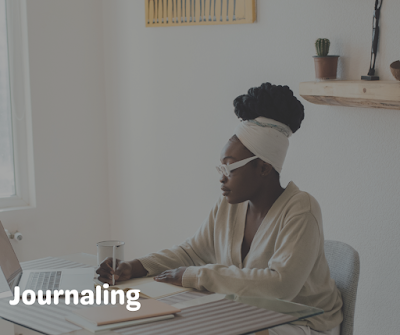Today, I’m going to share with you some mindfulness techniques that can help you reduce stress and anxiety.
Mindfulness is a state of being aware of the present moment, without judging or reacting to it.
It can help you cope with stress and anxiety by breaking the cycle of negative thoughts, emotions, and behaviors that often trigger them.
Mindfulness can also improve your physical and mental well-being, by enhancing your immune system, lowering your blood pressure, and increasing your happiness and satisfaction.
Stress and anxiety are common problems that affect millions of people around the world.
According to the World Health Organization, more than 260 million people suffer from anxiety disorders, and more than 300 million people suffer from depression.
Stress and anxiety can have serious consequences for your health, such as increasing your risk of heart disease, diabetes, obesity, and insomnia.
That’s why it’s important to find healthy ways to manage them.
In this blog post, I’m going to show you some mindfulness techniques that you can practice anytime and anywhere to reduce stress and anxiety.
These techniques are simple, effective, and fun to do.
They are:
Breathing exercises
Body scan meditation
Journaling
Walking
Coloring or doodling
Let’s dive into each of these techniques and see how they can help you relax and calm your mind.
Breathing Exercises
Breathing exercises are one of the easiest and most powerful mindfulness techniques.
They can help you calm your nervous system and regulate your emotions.
When you breathe deeply and slowly, you activate the parasympathetic nervous system, which is responsible for the relaxation response.
This lowers your heart rate, blood pressure, and muscle tension, and reduces the production of stress hormones such as cortisol and adrenaline.
Some examples of breathing exercises are:
Deep breathing: Breathe in through your nose for four counts, hold your breath for four counts, and breathe out through your mouth for four counts. Repeat this cycle for a few minutes.
Abdominal breathing: Place one hand on your chest and one hand on your belly. Breathe in through your nose and feel your belly expand. Breathe out through your mouth and feel your belly contract. Focus on moving your breath from your chest to your belly.
Alternate nostril breathing: Use your thumb to close your right nostril and breathe in through your left nostril. Then use your index finger to close your left nostril and breathe out through your right nostril. Switch sides and repeat this pattern for a few minutes.
Some tips on how to practice breathing exercises are:
Find a comfortable position, either sitting or lying down.
Focus on your breath and notice how it feels as it enters and leaves your body.
Notice any sensations or thoughts that arise as you breathe. Don’t try to change or judge them. Just observe them and let them go.
If you get distracted, gently bring your attention back to your breath.
Body Scan Meditation
Body scan meditation is another mindfulness technique that can help you increase awareness of your body and release tension.
It involves scanning each part of your body from head to toe or vice versa, and paying attention to any sensations that you feel, such as warmth, coldness, tingling, tightness, or pain.
By doing this, you can learn to accept and appreciate your body as it is, without judging or criticizing it.
Some examples of body scan meditation are:
Lying down: Lie down on a comfortable surface with your arms by your sides and your legs slightly apart. Start by focusing on the top of your head and gradually move down to your forehead, eyes, nose, mouth, chin, neck, shoulders, arms, hands, fingers, chest, abdomen, back, hips, legs, feet, and toes. Spend a few seconds on each part of your body and notice any sensations that you feel.
Sitting up: Sit up straight on a chair or cushion with your feet flat on the floor and your hands on your lap. Start by focusing on the bottom of your feet and gradually move up to your ankles, calves, knees, thighs, hips, lower back, upper back, shoulders, arms, hands, fingers, chest, abdomen, neck, face, and head. Spend a few seconds on each part of your body and notice any sensations that you feel.
Some tips on how to practice body scan meditation are:
Use a guided audio or video to help you follow the instructions. You can find many online resources for free or for a small fee.
Be gentle and curious with yourself. Don’t force or strain any part of your body. Just observe what is happening without trying to change it.
Acknowledge any feelings or sensations that arise as you scan your body. Don’t judge or resist them. Just accept them and let them go.
Journaling
Journaling is another mindfulness technique that can help you express your emotions, gain insights, and cope with challenges.
It involves writing down your thoughts and feelings on a regular basis, either in a notebook, a computer, or a smartphone.
By doing this, you can release any pent-up emotions, clarify your goals and values, and find solutions to your problems.
Some examples of journaling prompts are:
Write about three things that you are grateful for today.
Write about one goal that you have for this week and how you plan to achieve it.
Write about one fear that you have and how you can overcome it.
Write about one success that you had today and how it made you feel.
Some tips on how to practice journaling are:
Find a quiet time and place where you won’t be disturbed or distracted.
Write without judgment or censorship. Don’t worry about grammar, spelling, or style. Just write whatever comes to your mind.
Reflect on what you wrote and what you learned from it. How did it make you feel? What did it reveal about yourself? What can you do differently next time?
Walking
Walking is another mindfulness technique that can help you improve your mood, energy, and creativity.
It involves walking at a comfortable pace, either indoors or outdoors, and paying attention to your surroundings, your breath, and your steps.
By doing this, you can enjoy the beauty of nature, connect with other people, and stimulate your brain.
Some examples of walking activities are:
Walking in nature: Find a park, a forest, a beach, or any other natural setting where you can walk. Notice the colors, shapes, sounds, smells, and textures of the environment. Feel the sun, the wind, the rain, or the snow on your skin. Breathe in the fresh air and exhale any stress or tension.
Walking with a friend: Find a friend who is interested in walking with you. Choose a route that is convenient and safe for both of you. Talk about anything that is on your mind or listen to what your friend has to say. Share your thoughts and feelings and offer support and encouragement.
Walking with a purpose: Find a destination that is within walking distance from where you are. It could be a store, a library, a museum, or any other place that interests you. Set a goal for what you want to do or see there. Walk towards your destination with curiosity and enthusiasm.
Some tips on how to practice walking mindfully are:
Pay attention to your surroundings and notice any details that catch your eye. Don’t get lost in your thoughts or distractions. Be present in the moment.
Pay attention to your breath and notice how it changes as you walk. Don’t hold your breath or breathe too fast or too slow. Find a natural rhythm that suits you.
Pay attention to your steps and notice how they feel as they touch the ground. Don’t walk too fast or too slow. Find a comfortable pace that suits you.
Coloring or Doodling
Coloring or doodling is another mindfulness technique that can help you relax your mind, stimulate your imagination, and enhance your concentration.
It involves filling in shapes or patterns with colors or drawing anything that comes to your mind on a paper or a screen.
By doing this, you can express yourself creatively, reduce boredom, and improve your focus.
Some examples of coloring or doodling materials are:
Coloring books: Find a coloring book that appeals to you. It could be based on a theme, such as animals, flowers, mandalas, or geometric shapes. Choose some colors that resonate with you. Fill in the shapes or patterns with the colors of your choice.
Mandalas: Find a mandala template online or create your own using a compass and a ruler. A mandala is a circular design that represents the universe in Hinduism and Buddhism. Choose some colors that resonate with you. Fill in the sections of the mandala with the colors of your choice.
Blank paper: Find a blank paper of any size or shape. Choose some colors that resonate with you. Draw anything that comes to your mind on the paper. It could be abstract or realistic, simple or complex, random or intentional.
Some tips on how to practice coloring or doodling mindfully are:
Choose colors that resonate with you. Don’t worry about matching or contrasting colors. Just use the ones that make you happy or calm.
Let go of expectations. Don’t worry about making mistakes or creating something perfect. Just enjoy the process of coloring or doodling.
Enjoy the result. Don’t judge or criticize what you created. Just appreciate it for what it is.
In this blog post, I showed you some mindfulness techniques that you can practice anytime and anywhere to reduce stress and anxiety.
These techniques are:
Breathing exercises
Body scan meditation
Journaling
Walking
Coloring or doodling
I hope you found these techniques helpful and easy to do.
Mindfulness can have many benefits for your health and happiness, such as:
Reducing stress and anxiety by breaking the cycle of negative thoughts, emotions, and behaviors
Improving your physical well-being by enhancing your immune system, lowering your blood pressure, and preventing chronic diseases
Improving your mental well-being by increasing your happiness, satisfaction, and self-esteem
Improving your cognitive abilities by boosting your memory, attention, and creativity
I encourage you to try out some of these mindfulness techniques and see how they work for you.
You can start with a few minutes a day and gradually increase the duration and frequency as you feel comfortable.
You can also experiment with different techniques and find the ones that suit you best.
I would love to hear from you about your experience with mindfulness.
Feel free to leave a comment below.
Thank you for reading my blog post and have a mindful day! 😊









0 Comments